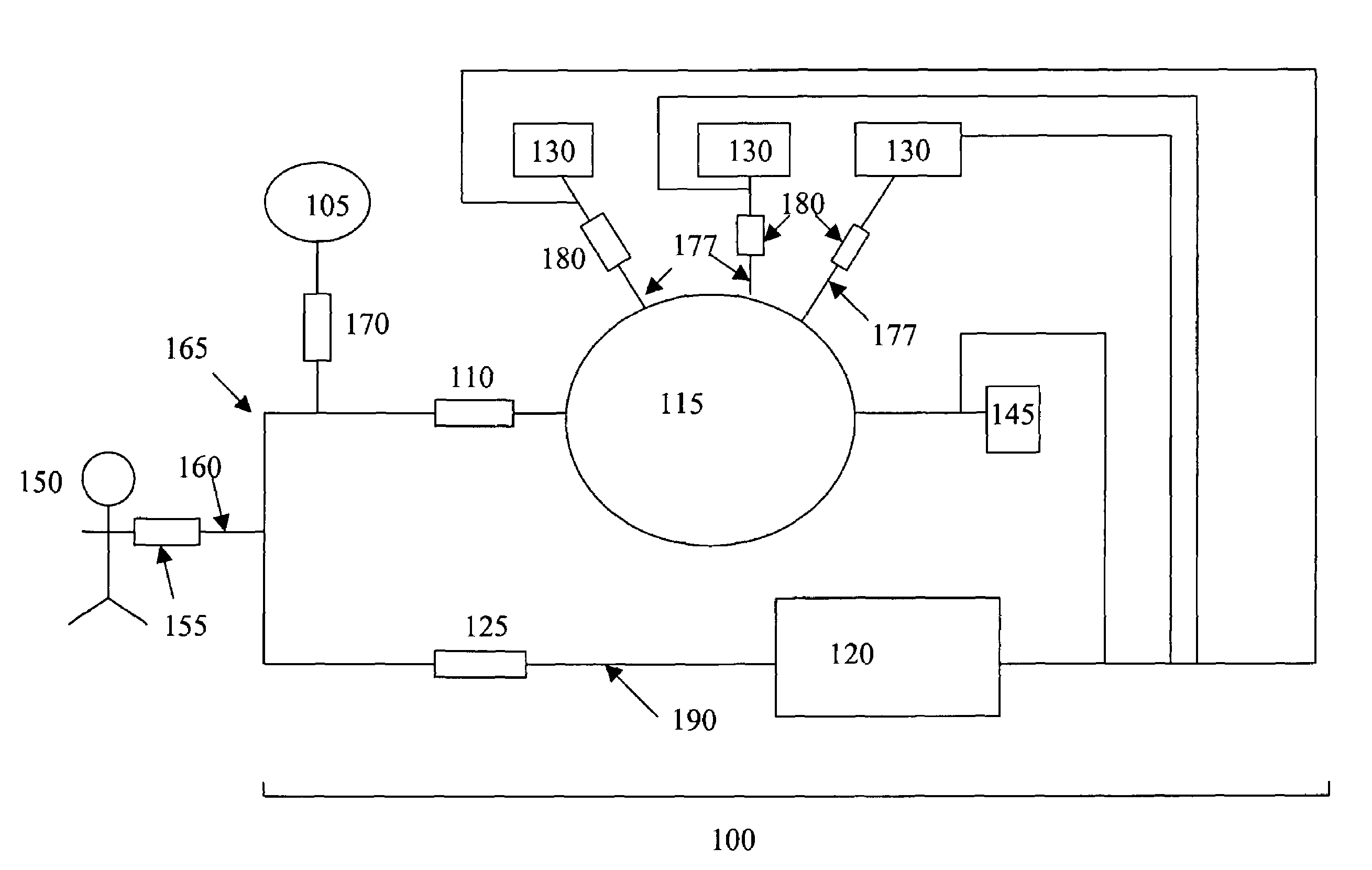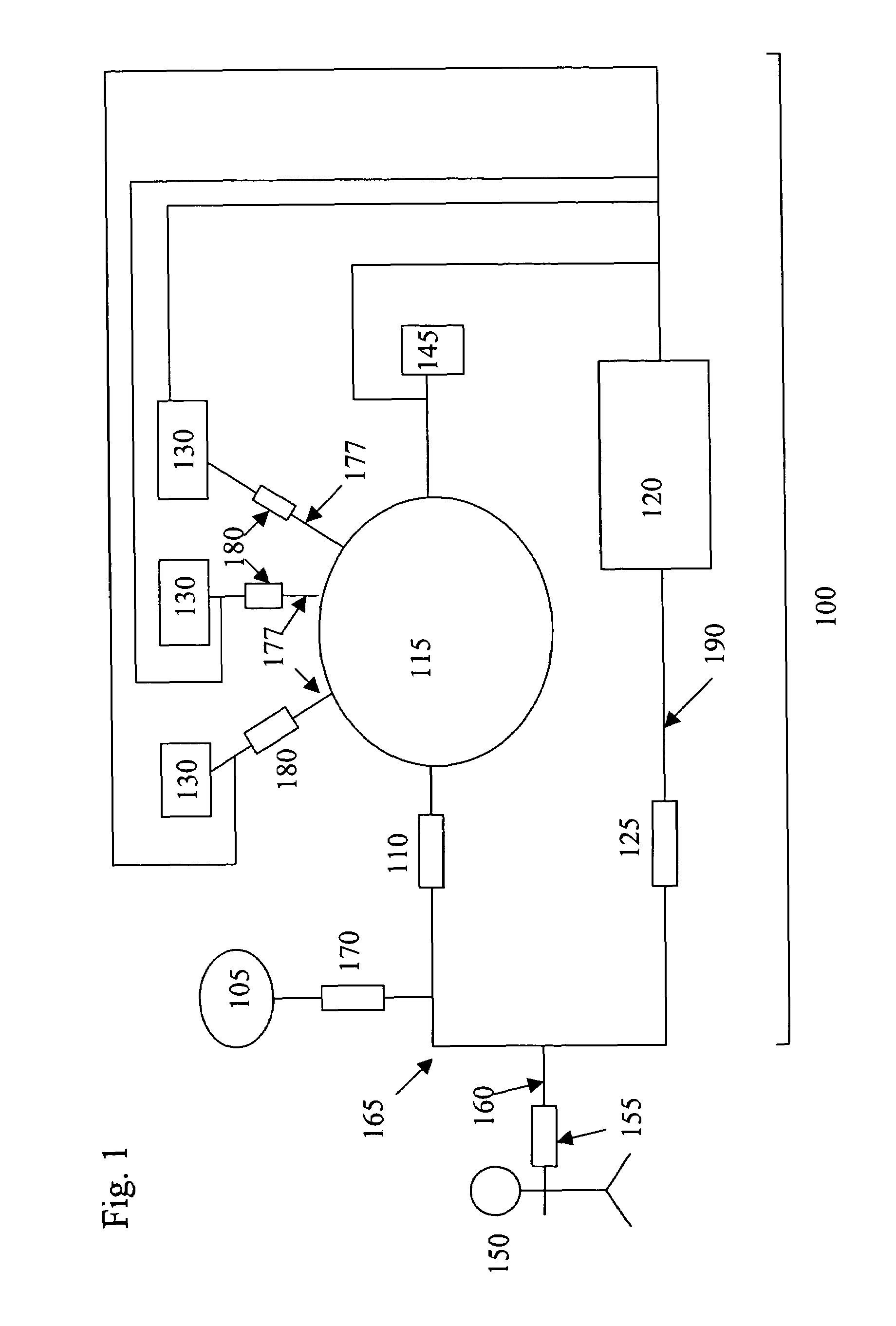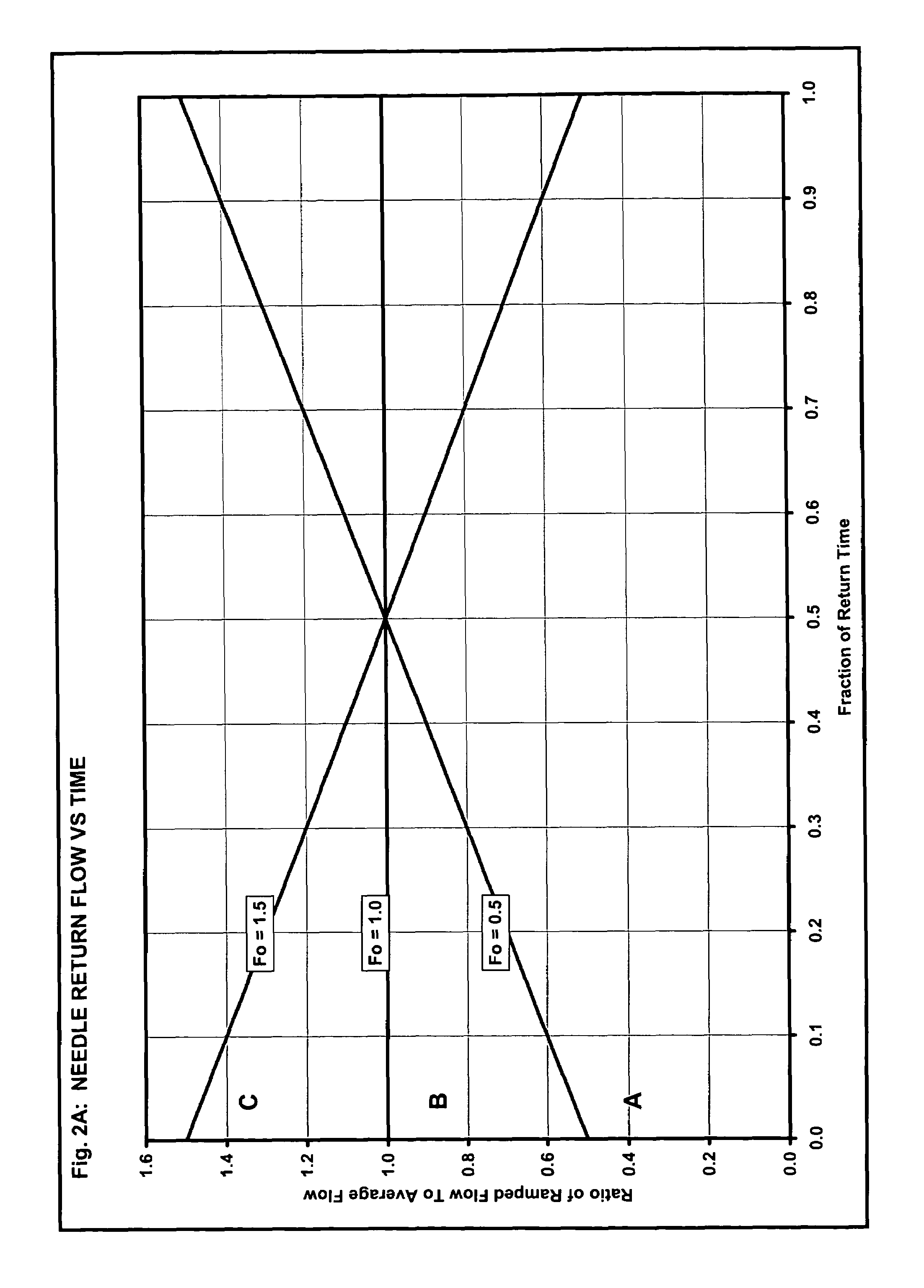Methods and devices for processing blood
a technology of blood and blood vessels, applied in the field of blood processing methods and devices, can solve the problems of blood vessel infiltration caused by rapid changes in the pressure of the access blood vessel, affecting the practice of these methods, and many practical limitations remain, so as to reduce the incidence of blood vessel infiltration, suppress the incidence of access blood vessel infiltration, and reduce physical discomfor
- Summary
- Abstract
- Description
- Claims
- Application Information
AI Technical Summary
Benefits of technology
Problems solved by technology
Method used
Image
Examples
Embodiment Construction
[0029]Referring to the drawings, like numerals indicate like elements and the same number appearing in more than one drawing refers to the same element. In addition, hereinafter, the following definitions apply:
[0030]“Blood processing” refers to the manipulation of a blood sample or component thereof, to realize a change in composition. Blood processing includes methods of separating blood or a component thereof into blood components or subcomponents, methods of collecting separated blood components or subcomponents, methods of removing blood components and / or removed blood, methods of infusing blood or blood components into a patient or donor, leukoreduction, pathogen inactivation, pathogen removal, blood component washing, red blood cell deglycerolization, or any combination of these processes. The present invention provides improved methods of blood processing wherein blood or blood components thereof are separated into components or subcomponents on the basis of density, size, s...
PUM
| Property | Measurement | Unit |
|---|---|---|
| return flow rate | aaaaa | aaaaa |
| volume | aaaaa | aaaaa |
| volume | aaaaa | aaaaa |
Abstract
Description
Claims
Application Information
 Login to View More
Login to View More - R&D
- Intellectual Property
- Life Sciences
- Materials
- Tech Scout
- Unparalleled Data Quality
- Higher Quality Content
- 60% Fewer Hallucinations
Browse by: Latest US Patents, China's latest patents, Technical Efficacy Thesaurus, Application Domain, Technology Topic, Popular Technical Reports.
© 2025 PatSnap. All rights reserved.Legal|Privacy policy|Modern Slavery Act Transparency Statement|Sitemap|About US| Contact US: help@patsnap.com



